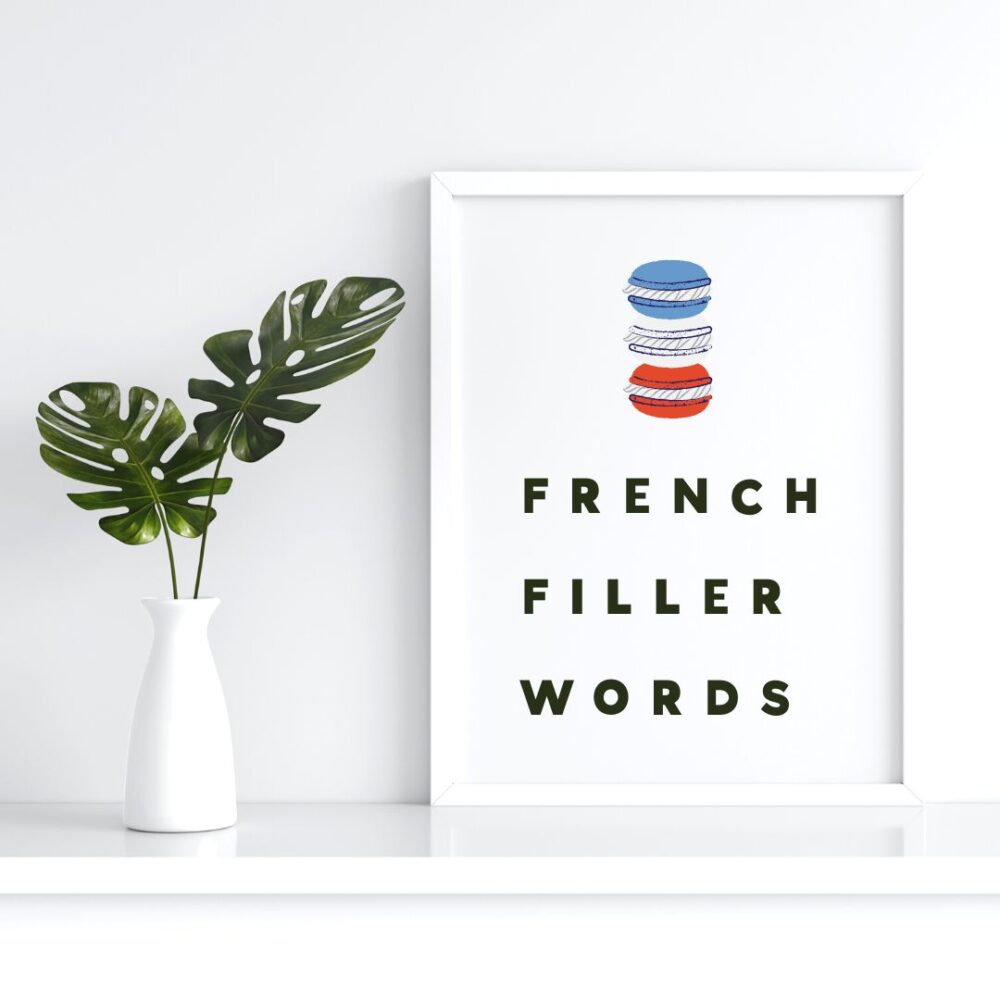Table of Contents
If your students watch any sort of videos or speak in a casual setting with native French speakers, there are two things that they will need to fully understand the conversation: swear words (which you probably don’t want to teach) and French filler words. These filler words are absolutely a necessary part of any language. They help to create fluid conversations and convey meaning beyond the literal one. Some filler words carry meaning, while others are just pauses that allow the speaker to think about what they want to say. In French, these fillers are especially important for giving students a greater understanding of the nuances of the language.
What Are the French Filler Words?
Filler words are short phrases that can be used to emphasize a point, create a pause or signal a transition between ideas in conversation. They can also be used to add interest and show politeness while speaking. In French, filler words have been around since the Middle Ages and have evolved over time with the language itself. Examples of common French filler words include “Enfin” (finally), “Donc” (so), “C’est-à-dire” (that is to say) and “Tiens” (well). These filler words are often part of the dialog but don’t necessarily need to be translated in order to understand the gist of the conversation.
How To Use French Filler Words
In order to properly use French filler words, it is important to know when they should be used. Some fillers can be used at the beginning of a sentence (donc, bref) while others can be used more naturally within a conversation (tiens, c’est-à-dire). Some filler words don’t add any meaning at all – they just allow the speaker to consider their next words. Much like umm in English, French people use the sound euh as they are thinking. This is probably one of the easiest ones for students to pick up and it will make their speech sound much more French with very little effort.
Why Teach Filler Words?
Teaching filler words is important because they help students understand conversational French more fully than just understanding the literal translation of each phrase or sentence. By teaching fillers along with other aspects of the language, students will gain a deeper understanding of how native speakers communicate with each other and will become better equipped for having actual conversations with native speakers in both formal and informal settings.
Watching simple videos on YouTube will give you an idea of just how common these words are – unless you are watching a scripted or formal productions, you will probably hear these words sprinkled throughout the video. This is in fact one of the ways in which you can teach these words – share a video with your students and have them keep track of how many times a filler word is used, and which ones are the most common. You may find that for every 2-3 sentences, there will be at least one filler word!
Which French filler words are the most useful?
Words that can show your place in the conversation:
voilà – used to introduce a concept, or to reinforce a statement that you’ve already made
bref – in short – it’s a way to show that you are coming right to the point
du coup – used to join two ideas together
Words to show that you are listening:
et alors? Can be used to ask the person to continue – sort of “and then?”
et puis? The same use as et alors
quand même – you can show annoyance or surprise by using this and asking a question
Words to get confirmation from a listener:
Tu vois? – you see what I mean?
Quoi – you know
hein – right?
If you’d like a good way to introduce French filler words to your students, there is a great video from Comme une Française. You might also enjoy this video by a French comedian about saying nothing at all while still speaking.




What a great blog post! Straightforward and to the point. I also like that you included a link to Comme une Française. I have used her videos extensively over the years, and my high school students love watching them.